
Manufacturer's Specifications
Drive: Direct.
Motor: Quartz PLL d.c., brushless, slotless, coreless Super Linear Torque.
Speeds: 33.3 and 45 rpm.
Pitch Control Range: ±6%.
Main Platter: 1.4 kg, aluminum die-casting, 310-mm diameter, 18 mm thick.
Center Search Platter: 550 grams, glass, 303-mm diameter, 6 mm thick.
Startup: Within one revolution.
Speed Deviation: Unmeasurable with quartz lock.
Speed Drift: Unmeasurable with quartz lock.
Wow & Flutter: 0.008% wtd. rms, FG direct; 0.03% wtd. rms after Center Search.
S/N Ratio: Greater than 78 dB (DIN B).
Moment of Inertia: 380 kg/cm^2.
Dimensions: 21 1/2 in. (54.6 cm) W x 9-1/16 in. (23 cm) H x 16-9/16 in. (42.1 cm) D.
Weight: 44 lbs., 1 oz. (20 kg), including tonearm.
Price: $1,740, including tonearm.
Company Address: 19701 South Vermont Ave., Torrance, Cal. 90502.
Nakamichi has earned an enviable reputation for making the best audio cassette recorders in the world. Years ago, they manufactured cassette machines for such companies as Harman/Kardon and Fisher. I remember the original Harman/Kardon audio cassette recorder because it set such high standards for quality that it changed the way people thought about such machines. When Philips invented the audio cassette system, they intended it for portable dictation, and audio quality was of secondary importance. The recorder Nakamichi built for Harman/Kardon changed all that. Arne Berg, who was a consultant for Harman/Kardon, was responsible for a great deal of the innovations incorporated in the design. He later co-founded TASCAM, which set new standards in the semi-professional recording business. Nakamichi decided to produce machines under its own name a few years ago: they continue to provide improvements in state-of-the-art audio cassette recorders.
Now, Nakamichi is making a similar name for itself with turntables. Over the years, improvements in turntable performance have been achieved by better motor design, electronic-control circuitry, suspension systems. etc., but until lately nothing innovative had happened in a long time. The new Nakamichi Dragon-CT turntable made me think about how symphonies were written by such composers as Haydn, Mozart, and Beethoven--each building upon the last but not changing the basic form very much. Along came Berlioz and voila: The "Symphonie Fantastique," a symphony with a fifth movement! Nakamichi may have had similar thoughts when they added a "fifth movement" to their turntable. Perhaps the Dragon-CT was to consume all the other turntables or at least breathe a little fire into the turntable business. In any case, the Dragon-CT does add something new to the game. I'll look at this turntable and then review the remarkable synergy of its arm with the Shure V15 Type V-MR phono cartridge in the next profile.
For years we have all watched our tonearms weave back and forth at 5.6 cycles per second. Then we watched them weave back and forth at 5.6 Hz; we had changed the name but not the game. Enter Nakamichi with a solution: A rod to move the edge of the turntable platter so that the record groove is centered exactly within ± 0.02 mm. Now we can be hypnotized by the music, not by an undulating tonearm. (Actually, this innovation was incorporated a few years ago in Nakamichi's first turntable, the TX-1000, but the Dragon-CT is much more affordable.)
This answer to the record-eccentricity problem, which uses a microprocessor and a rather complex algorithm to determine when concentricity has been achieved, does have a practical rationale. Modern cartridges, amplifiers, and loudspeakers can respond to the 0.56 Hz produced by an eccentric record groove. High-pass filters are often built into amplifiers to keep this low-frequency signal from causing intermodulation distortion in amplifiers and loudspeakers, but they can't prevent what has already occurred at the cartridge: Low-frequency modulation of the music, otherwise known as wow.
With its lightly smoked, black dust cover closed, the satin-black Dragon-CT reminds me of an austere Oriental jewel box except for the long, narrow control panel mounted on its front. Before even lifting the lid, the tiny gold lettering on this control panel would make anyone suspect that there was something different inside. The first thing I noticed was the Center Search arm, a second, short, pivoted arm at the rear of the main platform. It has a diamond stylus, and, since it is only used a few seconds for each record, it should outlast the rest of the turntable.
It isn't obvious at first chat the lid hinges are not attached to the main platform, but to a lower platform which has the leveling feet. Mounting the lid in this way keeps it from transmitting airborne vibrations to the main platform. A small enclosure at the left front of the main platform, near the turntable, contains both the light, which illuminates the strobe pattern in the turntable rim, and the Center Search control rod, which pushes the glass plate that lies on the main turntable platter into exact record groove concentricity. Both the main platform and the sub-platform are wood, painted black. The rest of the turntable is metal except for the oversized glass plate and rubber mat, which sit on the main patter, and the black control buttons and pitch-control knob, which are plastic At the four corners are round towers; by popping off their top caps. I could see the suspension-spring adjustments which provide low-frequency vibration filtering as well as a means of leveling the turntable. The feet of the towers have combination elastomeric and felt vibration filters, and these too can be adjusted to level the turntable. A satin-black tonearm with a fixed headshell is mounted on the main platform. The overall impression is of solid-albeit rather austere-reliability.
Features
The Absolute Center Search system sets the Dragon-CT apart from all other turntables. This system checks for eccentricity of a record's final, locked groove while the disc is turning at a quartz-locked speed of 33.3 rpm. The platter then stops, and the system moves the platter's oversized glass plate to the proper spot, centering the record perfectly. The testing and correcting algorithm allows three cycles of test and correction, after which an error light comes on if the record has not been exactly centered to within 0.02 mm.
Play can continue, if you wish, or you can try to visually re-center the record and begin the Center Search process again. (Using the Absolute Center Search feature is optional; you can play a record without ever invoking it.) Record manufacturing standards such as IEC 98A allow for up to 0.2 mm of eccentricity. Since Nakamichi controls the diameter tolerance of their spindle, they are in a good position to calculate a worst-case scenario for their algorithm.
Here is a more-detailed description of the Absolute Center Search system: After placing a record on the turntable platter, you push the button on the top of the center spindle to set the record, rubber mat and glass plate to the nominal center position. Then you .place the record weight over the spindle so it rests on the label and presses the record into firm contact with the rubber mat. With the tonearm unlocked but still on the arm rest, you press the start button. The turntable will begin rotating and the Center Search arm will activate, moving out to trace the position of the inner groove. At the rear of this arm is a shutter blade which is in the path of a photocell and a light source. The shutter modulates the amount of light hitting the photocell according to the amount of eccentricity; the more eccentricity, the greater the variation in light. The photocell converts this to a variation in electrical output, the amount of variation equaling twice the value of the eccentricity correction needed. This variation passes through an analog-to-digital converter and thence to a microprocessor.
To determine the exact point on the platter rim which must be pushed to effect the proper correction, another photocell and light source count the pulses produced by slits cut into the periphery of the turntable platter. By counting a specific number of pulses after the maximum output of the Search arm's sensor system, the turntable can be stopped at the right position. Next, the system activates the Center Search rod-control motor, which drives the positioning rod through a speed-reduction gear system. The rod moves out of the small housing at the left of the main platter and nudges the oversized glass platter. The rod retracts and the turntable platter begins to revolve again while the Center Search arm retraces the locked groove. If the error is still greater than ±0.02 mm, the process begins again. Three attempts are made to center the record exactly, after which the record is centered or the error light flashes. In either case, the turntable remains running and the record can be played. The initial pass of the Center Search system takes about 40 S; the next passes take about half that time.
Nakamichi has done some calculations which show the effect of record eccentricity upon wow and interchannel phase, and also upon variation in tracking force. These calculations show some pretty shocking things. Even if a record is within specification tolerances, as much as 0.6% unweighted and 0.2% weighted peak wow is produced at the inner grooves. Nakamichi claims that most manufacturers specify wow and flutter by measuring the motor directly, rather than using a test record. No wonder I have had trouble matching some turntable specs! I have always been very careful to center test records, because I can see the results at 5.6 Hz on the FFT spectrum analyzer and easily hear the effect upon test tones. The tones are steadier in both pitch and amplitude when the record is properly centered. Anyone who has a subwoofer system can see the reduction in excursion of the woofer cones after a record has been properly centered. The Nakamichi Absolute Center Search system makes this easy.
Measurements and Listening Tests
---MEASURED DATA---
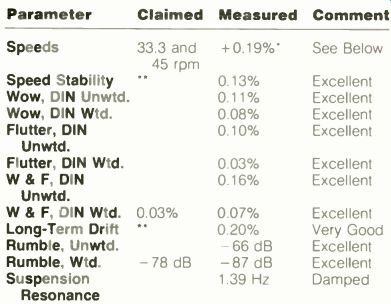
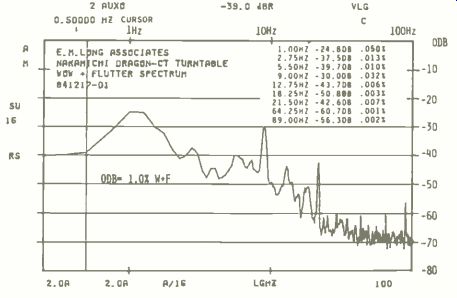
Fig. 1--Wow and flutter spectrum. Note that Nakamichi's Absolute Center Search
system reduces wow considerably, and that the peak at 9.0 Hz is due to the
resonance of the arm and cartridge.

Fig. 2--Speed drift over a 42-S period. Cyclic variations are at 1 8 S or 0.56
Hz and are related to one revolution at 33.3 rpm. This is the lowest variation
so far measured.
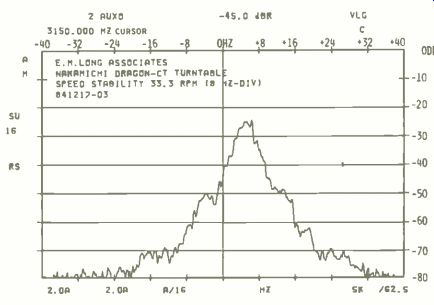
Fig. 3--Speed stability. The 0-Hz reference is to the 3,150-Hz tone on the B & K
2010 test record, band 8. Although the speed is a little fast, the tone may be
slightly high in pitch on the test record. The measurement here is excellent;
piano recordings will sound very realistic.
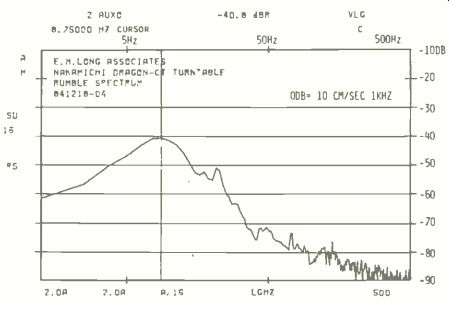
Fig. 4--Rumble spectrum, with main output due to the tonearm/cartridge resonance
at 9 Hz. The rumble is extremely low; most records will have more inherent
rumble than was produced by the Nakamichi Dragon-CT turntable itself.
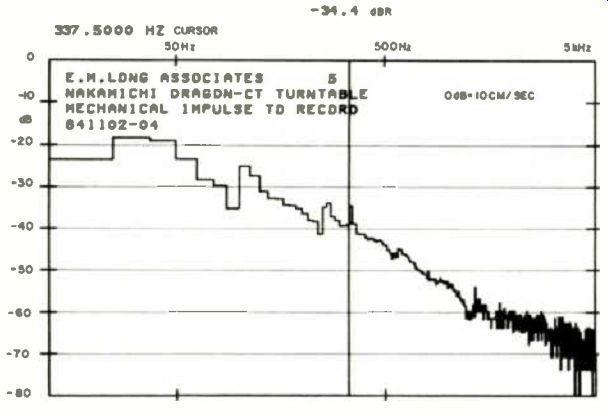
Fig. 5--Spectrum to 5 kHz due to a mechanical impulse applied to the edge
of a stationary record. The cursor is at 337.5 Hz, an artifact of the Dragon-CT
tonearm, where the output is -34.4 dB below 10 cm/S.

Fig. 6--Response to mechanical impulse applied to a record's edge.
If you have read any of my past reports, you know that I think technical measurements are best used to determine the reasons for comments made by members of the listening panel during listening tests. I try to correlate their impressions with artifacts of the technical measurements, and suggest possible explanations for their comments. Since the Dragon-CT turntable allows the record to be centered much better than I can do it manually, it is unlikely that the centering of the record on the reference turntable was as accurate during the listening sessions. The Nakamichi Absolute Center Search system was used throughout the listening session and the technical measurements. I did make one comparison, during the listening session, of a piano record played with and without centering. All of the panel members could hear the difference; most noted an increased clarity of piano tone when the record was centered. I also made measurements without centering to check the results against those made with it.
Figure 1 shows the spectrum of wow and flutter. The results are very good and compare favorably with those of past reports. A Shure V15 Type V-MR was used for this report, and the increase in output at about 9 Hz coincides with the arm/cartridge resonance. The measurement was made without the Shure's damper brush engaged; the Q is 13.24, which is quite high. With the damper brush operating, the results are much better. (The damper brush was used during the listening tests.) As in the past, I compared the Nakamichi turntable to my reference turntable, selected not because it is the best in the world (although it might be) but because I need á high-quality reference to which I, and the members of the listening panel, may compare performance.
Favorable comments were made by the panel regarding the clarity of the sound produced by both the Nakamichi and the reference turntable.
Figure 2 shows the variation in speed over a 42-S period; it is the lowest I have measured so far. There is a curious artifact, however-the small variation at approximately each half-rotation. I don't have a solid explanation for this, but it doesn't appear to affect the performance compared to the reference turntable.
Figure 3 indicates the drift in terms of the variation in pitch over a long period of time. This is as good as I had measured on the reference turntable and correlates well with the comments made by the listening panel about clarity, especially regarding piano recordings.
The rumble measurement also is very good, with the main output due to the undamped tonearm/cartridge resonance. This is shown in Fig. 4.
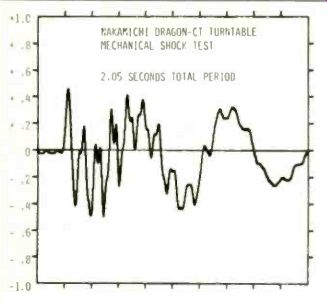
Fig. 7--Response to mechanical shock applied to the platform upon which the
turntable and base rested.
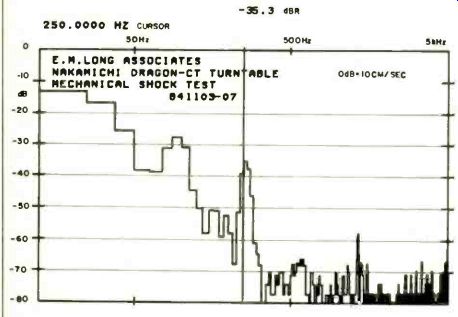
Fig. 8--Spectrum of output caused by a mechanical shock applied to the platform
upon which the turntable and base rested. The isolation to shock is not as
good as it might be, with the output at 250 Hz indicative of this problem.
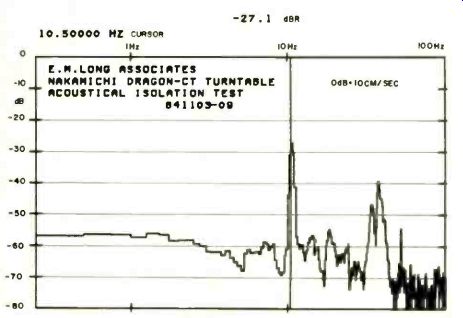
Fig. 9--Spectrum to 100 Hz due to a 100-dB SPL acoustic field at the surface
of a record. The stylus of the Shure cartridge was in a stationary groove near
the middle of the record. Acoustical isolation is only fair.
Figure 5 shows the average spectrum produced at the output of the Shure V15 Type V-MR phono cartridge, without the damper brush, for a series of mechanical impulses applied to the edge of a stationary record while the stylus is resting in a quiet groove. The output versus time for one of the impulses is shown in Fig. 6. This test is made to determine the effectiveness of the turntable mat and weight combination in removing from the record energy which could produce delayed mechanical input to the cartridge.
This could cause a blurring in the detail or enhancement of the sound. The energy removal is not as great as it could be, but the spectral distribution is fairly uniform except at 100, 270 and 337.5 Hz. The "fuller" quality of a recorded male voice, which one member of the listening panel commented on, could be caused by the delayed energy "enhancement" in this region. The metal platter resonances at 650 Hz, and at 1.2 and 1.8 kHz, are very well damped by the rubber mat and are barely visible. The resonance at 650 Hz is about 46 dB from the reference level of 10 cm/S. Figure 7 shows the output versus time for one of a number of mechanical shock impulses applied to the massive platform which I used to support the turntable during testing, and Fig. 8 shows the spectrum of the output for this test.
There is very little breakthrough of mechanical energy above the peak at 250 Hz. When the damper brush was engaged, the energy was also reduced at the lower frequencies. Viscous damping is available for the Nakamichi tonearm also, but I chose not to use it during the tests because the cartridge's damper was very effective and could be engaged and disengaged easily. None of the panel members made any negative comments about sound quality that could be attributed to inadequacy in the turntable's mechanical isolation system.
Figure 9 shows the spectrum of the output due to acoustical breakthrough produced by a 100-dB SPL acoustical field at the surface of the turntable platter. The energy at 9 Hz is caused by tonearm/cartridge resonance and is easily reduced by using the cartridge's damper brush or by the viscous damping system of the tonearm. The output at 34 and 37.5 Hz was reduced by closing the plastic cover on the turntable; it was also reduced considerably by using the damper brush.
Conclusions
The greatest difficulty for the listening panel was sorting out the tiny differences in sound between the Dragon-CT and the reference turntable. They were extremely close in all categories, though the Dragon-CT was preferred slightly on male voice. Drums sounded about the same to all but one panel member, who thought the Dragon-CT produced a slightly "tighter" sound. The piano sound produced by both systems was judged superb by all.
I liked the Absolute Center Search system because, although I have gotten pretty good at manually adjusting records to rotate in a circular rather than an elliptical orbit, I enjoy having a microprocessor work for me. Now, if they would only make the turntable go up and down to compensate for record warp! Meanwhile, the Nakamichi is certainly worthy of consideration for any top-quality audio system.
-Edward M. Long
(Source: Audio magazine, Apr. 1985)
Also see:
Nakamichi Dragon-CT Tonearm/Shure V15 Type V-HR Phono Cartridge (Apr. 1985)
Nakamichi Dragon-CT turntable (advertisement, Jan. 1984)
Nakamichi Dragon Cassette Deck (May 1983)
= = = =